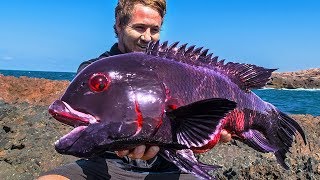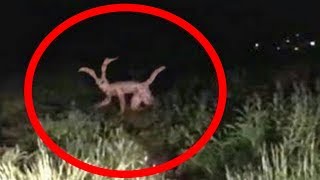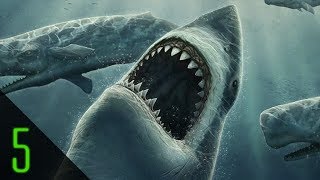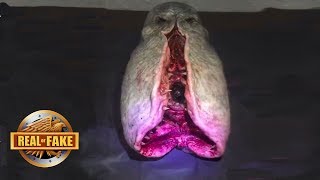Thursday, 25 December, 2025г.
















Где искать: по сайтам Запорожской области, статьи, видео ролики
пример: покупка автомобиля в Запорожье
9 Cryptids that Turned Out to be Real
From Dragons, to the mammal that lays eggs, these are 9 Cryptids that turned out to be REAL!
Komodo Dragon -- Until 1910, rumors of a huge, prehistoric reptile slithering about a remote Indonesian island were just that -- rumors. In that year, a Dutch colonial official undertook an expedition to Komodo Island .. and he captured and killed a 6 foot specimen. The dragon carcass was sent as proof to the Zoological Museum and Botanical Garden in Java, which bestowed the name ‘Varanus komodoensis’ (ver-annus komma-doan-sis) upon the creature. But an American explorer named W. Douglas Burden wanted proof for himself. So he organized his own expedition in 1926, with the goal of returning to New York City with two large, living specimens.
Yangtze Giant Soft-shell Turtle (Hoan Kiem Turtle) -- In a story taught to generations of Vietnamese schoolchildren, Kim Qui (q’why) is the legendary Golden Turtle God. This turtle is considered the sacred custodian of the magic sword of Le Loi (la loy) … the 15th century rebel leader who vanquished Chinese invaders. After his victory, Le Loi returned the sword to Kim Qui, who took it and submerged into the lake, which was later renamed “Hoan Kiem” (hone keem) … or ‘the Lake of the Returned Sword’. The Hoan Kiem Turtle was always considered a myth until 1998 … that’s scientists managed to film the creature and caught several live samples. And that proved to the world that the Golden Turtle God truly did exist! The former cryptid is recognized by science as the extremely rare Yangtze Giant Softshell Turtle, although it’s known by a few other names as well. There were only four such creatures known to exist, and one died at Hanoi’s Hoan Kiem Lake earlier in 2016, leaving only three in existence. You can find out more by checking out an episode we produced a few months back called “22 Rarest Animals on Earth”!
The Okapi ah-copy (African Unicorn) -- No, we didn’t make this one up. The Okapi (ah-copy) truly does exist in remote rainforests of central Africa. While it looks like a combination of animals including the zebra, deer, and antelope, it’s actually most closely related to the giraffe. You can tell by the neck. They even have that animal’s characteristic long blue tongue. While they were known to locals as the Atti or O’api these were quiet and solitary creatures … and they easily evaded attempts by Europeans to capture them …In fact, Europeans came to consider the okapi a myth, referring to them as the ‘African unicorn’. It wasn’t until 1901 that the okapi lost that mythical status . That’s when the British governor of Uganda, Sir Harry Johnston, sent the skeleton of an okapi, along its striped skin to the British Museum for classification. Even though the okapi is now recognized by mainstream science, it still remains an icon of cryptozoology in the 21st century.
Giant Squid (Kraken) -- Stories of enormous squids have circulated around the world since the days of Aristotle, who described such monsters. Legends such as the Lusca (luska) in the Caribbean or the Sea Monk of medieval Europe became familiar to seafarers … but the most famous of all legendary squids is the Kraken, the massive tentacled beast said to be as big as an island and devour ships whole. Such creatures were considered myths prior to 1870s, when carcasses of giant squids were beached on the shores of Newfoundland and Labrador.
Platypus (Chimera) -- If there’s any animal that qualifies as a real life cryptid, surely it’s the platypus … that’s why we’re giving this marvelous, mashed-up mammal our top spot. With a duck’s bill, otter-like feet and a beaver’s tail, the creature looks like it just stepped out of a Photoshop session. In 1798, preeminent British scientists thought the creature was a hoax. Even its corpse had scholars suspecting it was some sort of sewn-together animal made by Chinese sailors, not unlike the Fiji Mermaid. Today the Platypus is recognized as one of only five monotremes -- mammals that lay eggs instead of giving birth. Did you know this is one of the few venomous mammals … the males have spurs on their hind legs that can deliver venom that causes humans severe pain. It’s also known as an iconic symbol of Australia.
Subscribe to Epic Wildlife http://goo.gl/6rzs5u
Let's Connect
-- http://www.epicadamwildlife.com/
-- http://www.facebook.com/epicadamwildlife
-- http://www.twitter.com/epicwildlife
-- http://gplus.to/epicwildlife
Теги:
cryptids that turned out real mythical creature true mystery solved creepy scary bizarre most amazing unbelievable best epic greatest unidentified paranormal cryptozoology crypto fun friday epic wildlife nature animals creatures mythological cryptid sea serpent oar fish beaked whale dingiso ancestor spirit animal mountain gorilla komodo dragon giant soft shell turtle okapi african unicorn giant squid kraken platypus chimera fun awesome cool you won't believe biggest big
Похожие видео
Мой аккаунт


 У вашего броузера проблема в совместимости с HTML5
У вашего броузера проблема в совместимости с HTML5


